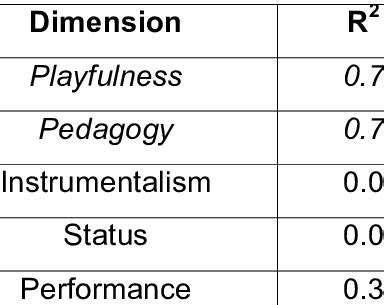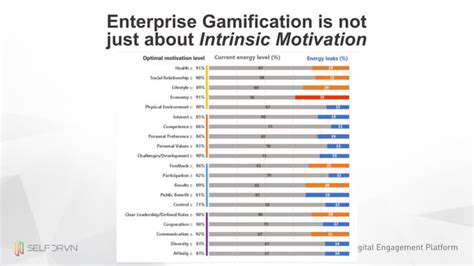Gamified Curriculum Development: From Concept to Implementation
It's crucial to note that effective gamification goes far beyond simply adding games to lesson plans. The most successful implementations weave game mechanics seamlessly into the curriculum, carefully matching each element to specific learning goals. For instance, a history teacher might create an immersive role-playing scenario where students earn historical points for accurately recreating events, rather than just playing an unrelated trivia game.
Implementing Gamification Strategies
Creating a gamified classroom requires thoughtful planning. Educators must first identify their core learning objectives, then select game elements that directly support those goals. A math teacher aiming to improve problem-solving speed might implement timed challenges with bronze, silver, and gold medal benchmarks. The key is ensuring rewards reinforce meaningful learning rather than just participation.
Personalization plays a huge role in successful gamification. Elementary students might light up at the chance to collect cartoon character badges, while high schoolers may prefer more sophisticated reward systems tied to real-world skills. Some learners thrive on competition, while others respond better to collaborative team challenges. The most effective educators remain flexible, adjusting their approach based on continuous student feedback.
The Benefits and Challenges of Gamification
When done well, gamification can transform classrooms. Students who previously struggled to engage suddenly find themselves eagerly completing extra challenges to level up their characters. Teachers report dramatic improvements in participation and retention when concepts are presented as quests rather than lectures. The social aspects of leaderboards and team challenges can also build valuable collaboration skills.
However, significant hurdles exist. Poorly designed systems might reward speed over comprehension, or create unhealthy competition. Not all students have equal access to the technology often required for digital gamification. Perhaps most challenging is maintaining engagement over time - what seems novel in September may feel stale by November, requiring constant innovation from educators.
Implementing and Evaluating a Gamified Curriculum

Understanding the Fundamentals of Gamification
At its heart, gamification borrows from what makes games compelling - clear goals, measurable progress, and satisfying rewards - and applies these to learning. The most successful implementations create a delicate balance between challenge and achievability, keeping students in what psychologists call the flow state where they're fully immersed in the activity.
Defining Clear Objectives and Goals
Before selecting any game mechanics, educators must answer fundamental questions: Are we trying to increase homework completion? Improve test scores? Encourage creative problem-solving? Vague goals lead to ineffective gamification, while specific, measurable targets allow for precise mechanic selection and later evaluation.
Selecting Appropriate Game Mechanics
The toolbox of gamification contains numerous options - points systems, progress bars, virtual goods, narrative frameworks, and more. A vocabulary program might use a word mastery meter that fills as students demonstrate understanding, while a science class could implement a lab equipment unlock system where students earn access to more advanced tools. The mechanics must feel organic to the subject matter rather than tacked-on decorations.
Designing Engaging and Intuitive User Experiences
Clunky interfaces can ruin even the most brilliantly conceived gamified system. Progress tracking should be immediately visible, rewards should feel substantial, and the rules must be crystal clear. A confusing points system or hard-to-navigate platform will frustrate students faster than no gamification at all. Many successful implementations start with simple paper-based systems before scaling up to digital platforms.
Implementing and Monitoring the Gamification System
Rollout requires careful planning. Will students receive orientation sessions? How frequently will points/levels update? What fallback systems exist for technological issues? Consistent monitoring in the early stages helps identify and fix problems before they discourage participation. Many teachers find it helpful to appoint student beta testers to provide feedback before full implementation.
Evaluating the Impact and Making Necessary Adjustments
After implementation, rigorous evaluation separates effective gamification from mere novelty. Are the target metrics improving? Are certain student groups responding better than others? The most successful programs evolve based on data, not assumptions. A biology teacher might discover her ecosystem simulation game works wonderfully for visual learners but needs adaptation for auditory learners, prompting adjustments.
Scaling Gamification for Institutional Use

Scaling Gamification for Institutional Impact
While individual teachers can gamify their classrooms relatively easily, institution-wide implementation presents complex challenges. The most successful large-scale programs maintain consistency across departments while allowing for subject-specific adaptations. A university might establish core gamification frameworks (like a unified achievement system) while letting each discipline customize how students earn those achievements.
Defining Clear Objectives and Metrics
At scale, vague goals like improve learning become untenable. Institutions must identify specific, measurable outcomes - perhaps increasing the percentage of students completing optional practice problems by 25%, or reducing freshman course withdrawal rates by 15%. These concrete targets allow for meaningful evaluation of the program's return on investment.
Developing Engaging Gamified Experiences
Large-scale gamification requires balancing standardization with personalization. While a common rewards framework maintains consistency, different departments need flexibility. The art history gamification system might emphasize visual portfolio development, while the computer science program could focus on coding challenge completions. The best systems feel uniquely tailored to each discipline while maintaining institutional cohesion.
Implementing and Maintaining the System
Institutional rollout demands robust infrastructure. This includes training programs for faculty (many of whom may be gamification novices), technical support systems, and clear documentation. Pilot programs with volunteer departments often reveal unanticipated challenges before full implementation. Ongoing maintenance requires dedicated staff to update content, troubleshoot issues, and keep the experience fresh.
Addressing Equity and Accessibility Concerns
Institution-wide gamification must be designed with all students in mind. Assuming universal smartphone access or 24/7 computer availability creates immediate barriers for some learners. Successful programs offer multiple participation pathways - perhaps mobile apps for some activities, but also low-tech alternatives like paper tracking sheets or in-lab kiosks.
Fostering Collaboration and Communication
Cross-departmental committees prove invaluable for large-scale gamification. Regular meetings allow faculty to share successes, troubleshoot challenges, and brainstorm interdisciplinary opportunities. Student advisory groups provide crucial feedback on what mechanics actually engage rather than frustrate. This collaborative approach helps maintain enthusiasm as the novelty wears off.
Evaluating and Adapting the Gamification Strategy
Institutional gamification requires ongoing assessment. Are participation rates consistent across demographic groups? Are certain metrics improving while others stagnate? The most successful programs establish regular review cycles, using data to guide refinements. What works during the first semester may need adjustment by the third as student behaviors and expectations evolve.